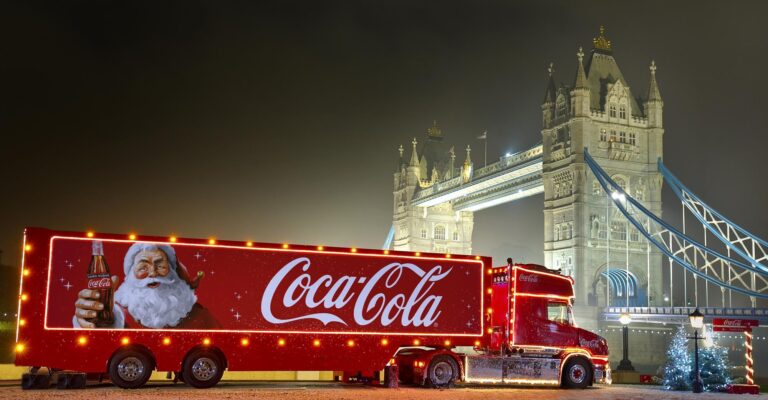Coca-Cola’s holiday ads have long been a staple of the festive season, evoking nostalgia and spreading cheer. Yet, these iconic commercials are once again igniting debate and drawing mixed reactions from audiences across the country. As the beverage giant rolls out its latest seasonal campaign, critics and fans alike are weighing in on what some see as a departure from tradition, while others applaud the brand’s evolving message. This article explores why Coca-Cola’s holiday ads are causing a stir – again – and what it reveals about the cultural landscape during the most wonderful time of the year.
Coca-Cola Holiday Ads Spark Debate Over Cultural Sensitivity
Recent Coca-Cola holiday ads have once again reignited conversations around cultural sensitivity and representation. Critics argue that some commercial choices reflect outdated stereotypes, overshadowing the brand’s festive intentions. Specifically, certain portrayals have been called out for lacking genuine inclusivity, with audiences pointing to monocultural narratives that fail to resonate with today’s diverse global community. Social media platforms have become hotspots for debate, where viewers dissect everything from casting decisions to the symbolic elements used in the campaigns.
On the other hand, supporters of the ads contend that the company’s efforts aim to spread joy and unity during the holiday season, emphasizing traditional themes of togetherness and celebration. However, the tension between intention and impact is evident in the responses, prompting industry-wide discussions about how brands should evolve their storytelling. Below is a quick overview of key concerns and defenses voiced around these ads:
- Concerns: Reinforcement of stereotypes, lack of authentic representation, cultural insensitivity in imagery
- Defenses: Celebratory tone, familiar holiday motifs, brand heritage consistency
- Audience Impact: Polarized opinions, increased calls for diversity, expectations for modernized messaging
| Aspect | Criticism | Brand Response |
|---|---|---|
| Casting | Predominantly homogeneous groups | Selection based on nostalgic themes |
| Visual Symbolism | Potential cultural misappropriation | Focus on universal holiday icons |
| Messaging | Simplistic and exclusionary | Intent on promoting unity and warmth |
Analyzing the Impact of Marketing Choices on Brand Reputation
Recent marketing decisions by Coca-Cola have spotlighted the powerful correlation between advertising strategies and public perception. This year’s holiday campaign, which features unconventional storytelling and diverse cultural representations, has both captivated and divided audiences. Some praise the refreshing shift toward inclusivity and emotional resonance, while others criticize it for straying from traditional themes that have long been associated with the brand’s identity. These varied reactions underscore how nuanced consumer expectations can directly influence a brand’s reputation, often amplifying scrutiny across social media platforms and news outlets.
Analyzing past campaigns alongside the latest rollout reveals clear trends in consumer sentiment and engagement. Consider the following key factors affecting brand reputation in this context:
- Emotional storytelling: Connecting on a deeper level fosters loyalty but risks alienating segments that prefer classic messaging.
- Cultural relevance: Reflecting diverse audiences boosts inclusivity but can trigger backlash from those resistant to change.
- Social media amplification: Instant feedback loops elevate praise and criticism alike, accelerating reputation shifts.
| Campaign Element | Positive Impact | Negative Impact |
|---|---|---|
| Storytelling Approach | Creates emotional bonds | Perceived as inconsistent |
| Diverse Casting | Reflects modern society | Faces traditionalist criticism |
| Digital Presence | Maximizes reach | Amplifies controversy |
Strategies for Balancing Tradition and Inclusivity in Holiday Campaigns
Modern holiday campaigns walk a fine line between honoring cherished customs and embracing an evolving cultural landscape. Brands like Coca-Cola attempt to weave traditional imagery-snowy scenes, red-and-white motifs, and classic carolers-with messages that resonate broadly across different backgrounds, ages, and family structures. Key to this approach is authenticity: campaigns that feel forced or tokenistic risk alienating their audience, while those that genuinely reflect diversity can foster emotional connections and broaden appeal. Elements such as diverse casting, multicultural narratives, and inclusive language have become staples in carefully curated adverts aiming to celebrate the season without erasing its nostalgia.
To balance legacy and inclusivity, strategists often rely on a blend of creative components that respect both past and present sensibilities. The following list summarizes effective tactics used in recent holiday marketing efforts:
- Embracing varied family dynamics: portraying single parents, multigenerational gatherings, and friends-as-family.
- Highlighting universal values: joy, giving, and togetherness over specific religious or cultural references.
- Employing subtle symbolism: festive elements that suggest warmth and celebration without exclusion.
- Incorporating interactive and digital storytelling: allowing consumers to personalize and see themselves in campaigns.
| Traditional Element | Inclusive Adaptation |
|---|---|
| Classic Santa imagery | Multicultural Santa representations |
| Family dinner scenes | Extended friends and chosen family gatherings |
| Religious carols | Seasonal songs celebrating unity |
| Red and green décor | Expanded color palettes embracing various holiday themes |
The Conclusion
As Coca-Cola continues to lean into holiday nostalgia and festive cheer, its latest advertising campaign once again highlights the brand’s powerful cultural presence-and the complexities that come with it. While the ads have sparked debate among viewers, they also underscore how deeply intertwined Coca-Cola remains with seasonal traditions in the United States. Whether celebrated or critiqued, these holiday commercials serve as a reminder of the ongoing conversation about marketing, representation, and consumer expectations in today’s media landscape.




